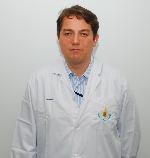Dr. Daam Settachan

54 Kamphaeng Phet 6 Talat Bang Khen, Lak Si, Bangkok 10210, Thailand
– Development and refinement of whole-effluent toxicity tesing with local indicator species as a monitoring tool for wastewater effluent quality
– Rodent models for inhalation toxicity testing to determine health effects from exposure to environmental toxicants
Publications
Exposure to benzene in various susceptible populations: co-exposures to 1,3-butadiene and PAHs and implications for carcinogenic risk.
Ruchirawat M, Navasumrit P, Settachan D
Chem Biol Interact184p67-76(2010 Mar 19)
Chemosphere76p239-49(2009 Jun)
Ruchirawat M, Settachan D, Navasumrit P, Tuntawiroon J, Autrup H
Toxicol Lett168p200-9(2007 Feb 5)
Ruchirawat M, Navasumrit P, Settachan D, Autrup H
Ann N Y Acad Sci1076p678-90(2006 Sep)
Ruchirawat M, Navasumrit P, Settachan D, Tuntaviroon J, Buthbumrung N, Sharma S
Toxicol Appl Pharmacol206p207-14(2005 Aug 7)
Navasumrit P, Chanvaivit S, Intarasunanont P, Arayasiri M, Lauhareungpanya N, Parnlob V, Settachan D, Ruchirawat M
Chem Biol Interact153-154p75-83(2005 May 30)
Frame, LT, Settachan, D and RL Dickerson (1999). 4,4’-dichlorodiphenyl- ethylene (4,4’-DDE) is a 3-methylcholanthrene-type inducer in the deer mouse (peromyscus maniculatus) but an Aroclor-type inducer in the vole (microtus ochrogastor). Organohalogen Compounds. 43: 57-62.
Miller, JD, Settachan, D, Frame, LT and RL Dickerson (1999). 2,3,7,8-tetrachlorodibenzo-p-dioxin phase advances the deer mouse (peromyscus maniculatus) circadian rhythm by altering expression of clock proteins. Organohalogen Compounds. 42: 23-28.
Settachan, D and RL Dickerson (1999). The pharmacokinetics of 2,3,7,8-tetrachlorodibenzo-p-dioxin transfer from adult White Leghorn chicken to their eggs. Organohalogen Compounds. 43:13-18.





